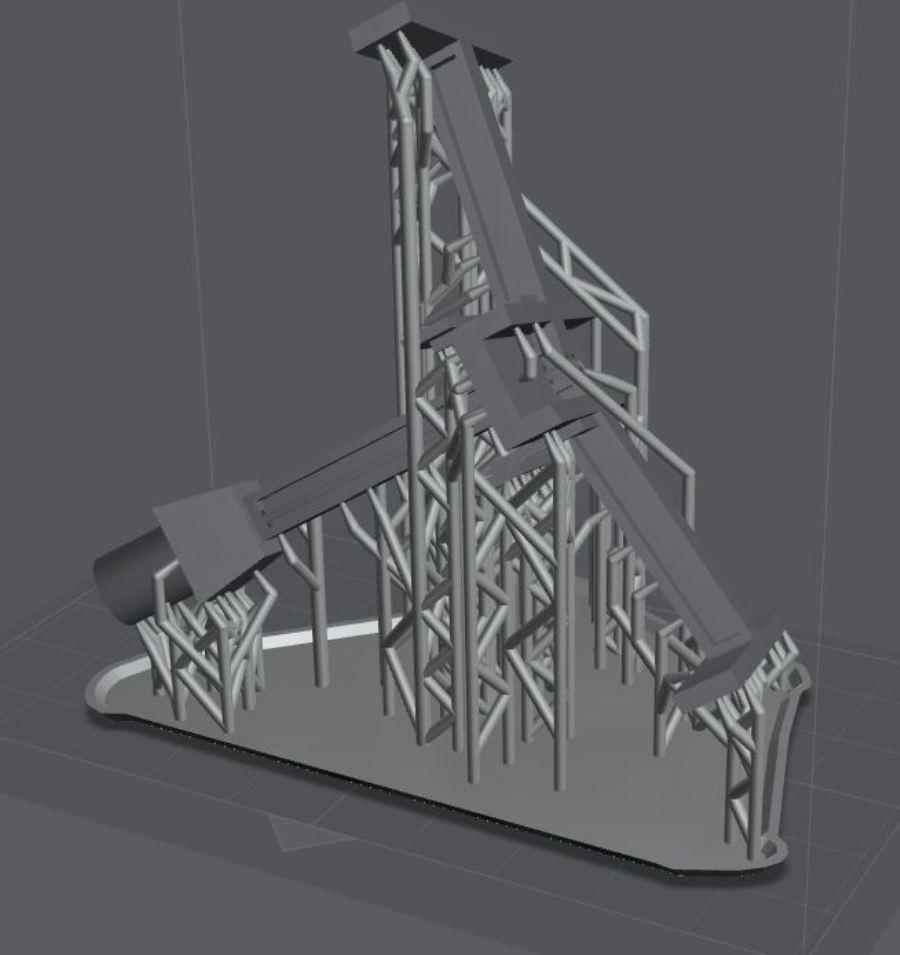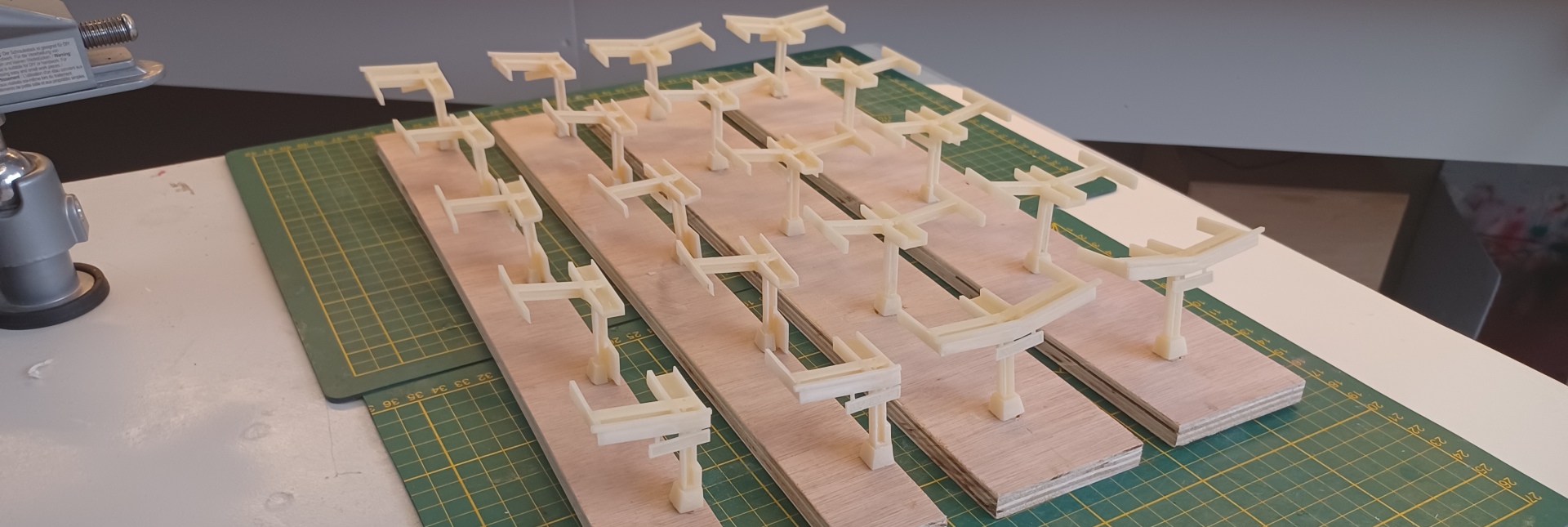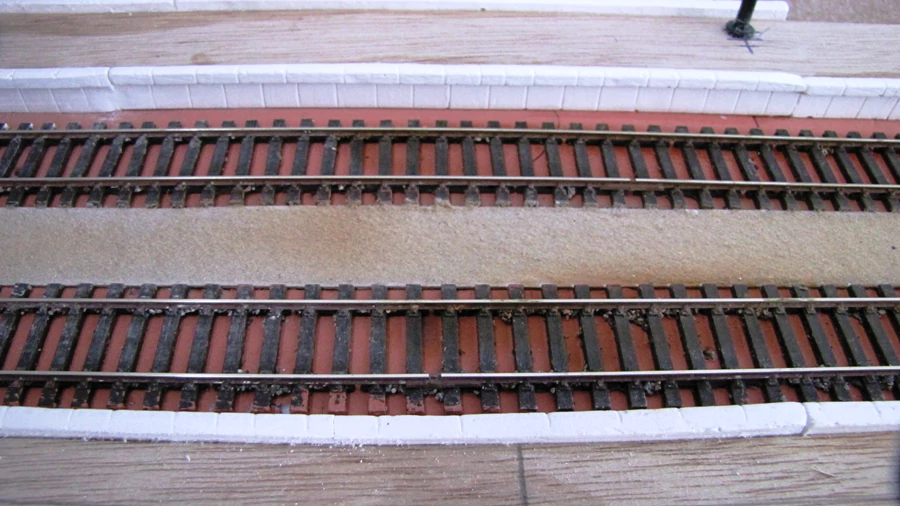


I glued some strips of 4mm foam onto a plank. The width corresponds to the width between the platform edges. In between, I applied a layer of DAS clay using a rolling pin. I removed the bristles from an old paintbrush and bent the neck into a square shape using pliers. With some calculations, you can determine how big the tiles/bricks should be. Using a drafting triangle, I pressed the tiles into the DAS clay.
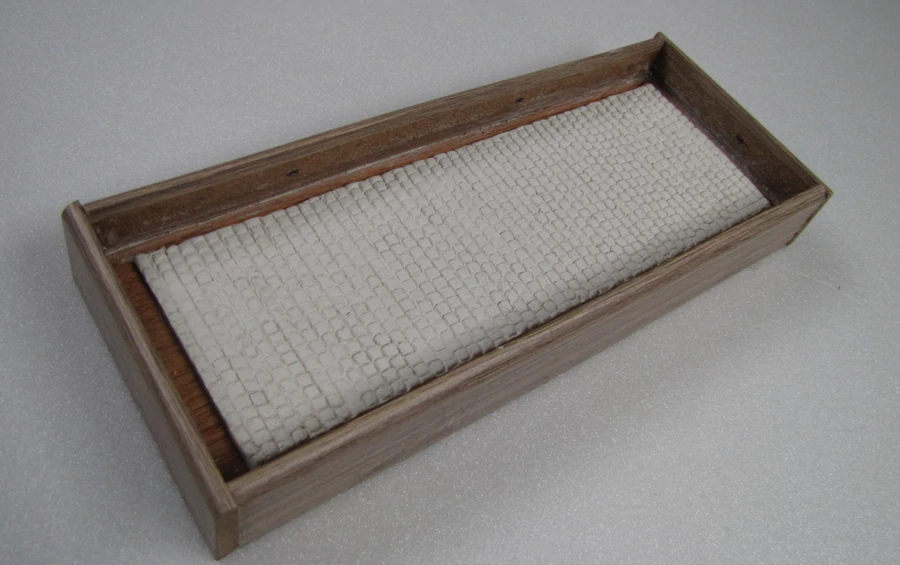
The box can now be partially filled with silicone rubber. There are various suppliers offering these products for making molds.
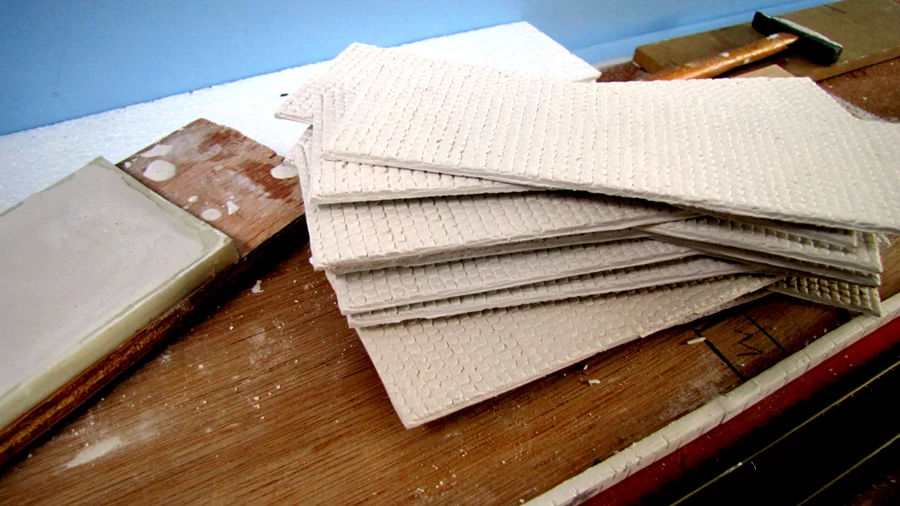
After the mold has completely cured, wash it with regular hand soap. Then, it can be used to cast as many plates with model plaster as you need. The seams were smoothed with red plaster. I did not use model plaster for this because it dries too quickly and cannot be washed away. The platforms were then colored to the desired shade and washed with a dark color after drying. You can optionally use an airbrush to add some shades here and there to make the platforms look old.
